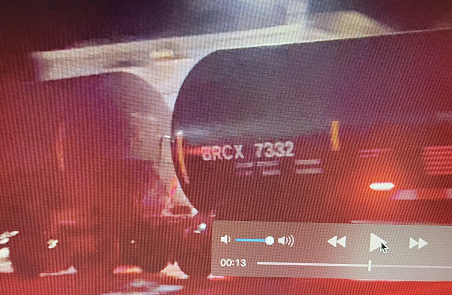Cancer Action NY Letter to NYS DEC Commissioner Martens
October 8, 2012Lawsuit Challenges Frackers' Waste Disposal Practices in Arkansas
October 10, 2012CNN, October 4, 2012
Quote from Paul Rubin, Hydrogeologist, HydroQuest, regarding the following article:
And, so it begins (or continues) … the mysterious appearance of oil slicks in the Gulf of Mexico and elsewhere in marine waters and, quite likely, in lakes and reservoirs that have flooded over old abandoned oil and gas wells – the insidious degradation and failure of cement plugs accompanied by the upward release of natural gas, hydrocarbons and “safe” permitted gas company toxins that are surely out of sight. As more and more cement sheath and plug failures occur and as gas companies aggressively move on to new plays …tens of thousands of marine and land-based wells will release gas and chemicals into the environment, our marine food sources, into our drinking water, our ecosystems …
* * * * * * *
(CNN) — An oil sheen about four miles long has appeared in the Gulf of Mexico near the site of the worst oil spill in U.S. history, a Coast Guard spokesman said Thursday.
It was not immediately clear where the oil is coming from, said Petty Officer 3rd Class Ryan Tippets.
The Coast Guard found out about the oil sheen on September 16 after someone spotted it on a satellite image from the multinational oil and gas company BP, Tippets said. A Coast Guard response team went to the location to collect samples, and sent them to the Coast Guard Marine Safety Lab in Connecticut for testing. Test results are expected in a few weeks, Tippets said.
The service’s Marine Safety Unit Morgan City, in Louisiana, is heading up the investigation of the spill, which is in the part of the Gulf officially designated MC252. No one has reported any adverse effects on the environment or marine life, Tippets said.
The sheen is near the spot where, on April 20, 2010, BP’s Deepwater Horizon drilling rig exploded over the Macondo well, killing 11 workers and spewing oil that spread across a huge portion of the Gulf.
The badly damaged mile-deep well leaked oil into the Gulf of Mexico for five months. On September 19, 2010, retired Coast Guard Adm. Thad Allen, who led the federal disaster response, declared that a cement plug had permanently sealed the leak, so that it posed no further threat.
In total, about 4.9 million barrels (205.8 million gallons) of oil leaked into the Gulf, according to estimates from federal scientists.
In an incident that appears unrelated to the new oil sheen, the Coast Guard’s Morgan City unit also is investigating a small amount of oil leaked from a Gulf oil platform.
Apache Corp. reported the spill to the Coast Guard and regulators as soon as the company noticed the leak on Tuesday, said Apache spokesman John Roper.
He said a valve problem caused less than two barrels (84 gallons) of oil to spill into the water near Grand Isle, Louisiana.
No marine or environmental damage has been reported from this incident either, Tippets said.



